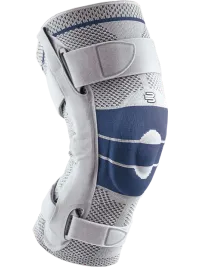Frozen shoulder and rotator cuff tears are common conditions treated by Orthopaedic Surgeons. Both conditions may present with shoulder pain and limited range of motion. However, there are several important differences this article will review.
Frozen shoulder, also called adhesive capsulitis, is a common cause of shoulder pain. This condition usually occurs in people in their 40s and 50s and is associated with endocrine conditions, including diabetes and thyroid disease. Typically, there is no injury or traumatic event. There are three separate phases: freezing, frozen, and thawing. Most patients notice significant pain initially. As the pain subsides, the shoulder range of motion decreases substantially, resulting in impairment of normal activities of daily living. Over time, patients regain their range of motion slowly. Most patients are treated non-surgically. Treatment options may include anti-inflammatories, physical therapy, and steroid injections. If non-surgical treatment is unsuccessful, surgery may be an option. Two common procedures used to treat frozen shoulder are manipulation under anesthesia and arthroscopic capsular release. A manipulation under anesthesia is a release of the shoulder capsule performed under sedation. An arthroscopic capsular release is an outpatient surgical procedure in which special instruments are used to carefully release the capsule through small incisions. Your orthopedic surgeon will decide which procedure is right for you after discussing the risks and benefits.
Rotator cuff tears are also a common cause of shoulder pain. Patients can present at any age; however, acute traumatic tears often occur in younger patients, while degenerative tears occur in older patients. The symptoms may include pain, weakness, and oftentimes limited range of motion. Treatment is typically nonsurgical for many patients and has a relatively high success rate. Nonsurgical treatment options include physical therapy, nonsteroidal anti-inflammatory medication, steroid injections, and home exercise programs. If nonoperative treatment is not successful, surgery may be considered. Surgical treatment is arthroscopic rotator cuff repair. During this procedure, a tiny camera is introduced into the shoulder and the tear is repaired through very small incisions with minimal blood loss. After surgery, your shoulder is immobilized in a sling for a period of time, and patients attend physical therapy to regain their strength and range of motion.
This article is provided courtesy of Christopher Pokabla, MD

